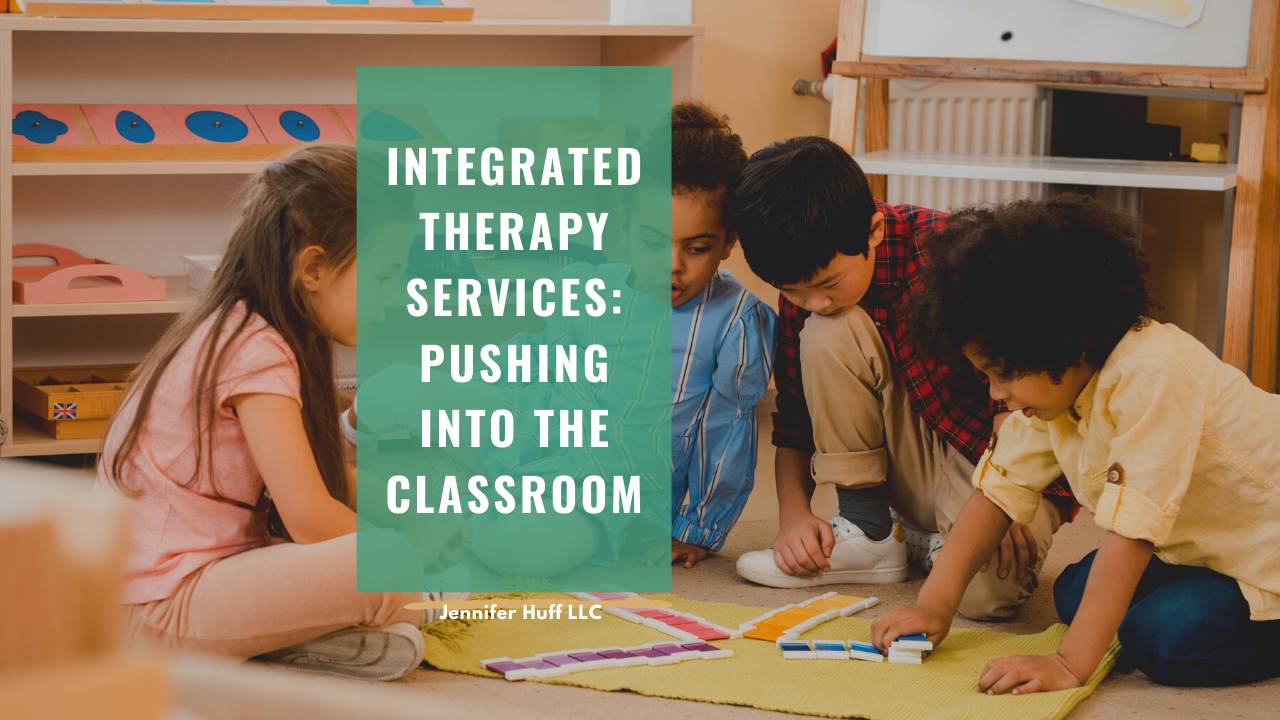Integrated Therapy Services: Pushing into the Classroom
Feb 08, 2024
"I feel like I'm not doing anything."
"I am just in the way."
"I thought they would be doing writing, but the class was reading. I didn't know what to do."
These are all statements I’ve heard from school-based therapists when they attempt to provide services in the classroom. Some of the OTPs I have talked to haven’t even tried push-in therapy, but they’re already plagued by these same thoughts!
Personally, I’ve had each and every one of these thoughts myself.
Over the years I have learned so much about push-in services. These thoughts are no longer a hindrance to my practice, and I hope to help you shift your mindset and confidently step into the classroom.
Here are 3 tips that have helped me provide more integrated support to my students.
Tip #1: Communicate with the teacher
Our OT schedules are difficult enough to navigate. Pair that with the chaotic schedule teachers are faced with and it can be a daunting task. Nonetheless, establishing good communication is an important foundation to successful push-in therapy. This includes ensuring the teacher understands WHY you are in the room.
You are there to support the student. You are helping and supporting the teacher to find strategies that will help the student progress towards established goals. A few minutes of collaboration before you push-in can help solidify that you and the teacher are on the same team.
Tip #2: Be flexible
Yes, it can be frustrating when you arrange your push-in time in accordance to when you believe the student will be working on a specific task and then find the class doing something completely different. Keep the big picture in mind.
Even when supporting handwriting goals there are numerous student factors we address. Is the activity one that allows you to support underlying factors such as environment, sensory needs, or executive functioning concerns? All of those factors may also be relevant to the student’s engagement in handwriting tasks.
Is the activity one that you can modify slightly to help you target some of the interventions you wanted to try? Maybe you can support the use of accommodations such as wiggle seats, reading trackers, or access to sensory breaks. Keep in mind all aspects of the IEP that you are supporting.
Tip #3: Take some pressure off of data collection
When you are providing services in the natural environment, the task may not lend to collecting data specific to an established goal. For example, you are supporting a goal related to the student writing three sentences on a given topic. Maybe you’re in the classroom during writing, but they are not doing the task within the parameters of the goal, so you are not able to get a “clean” data point.
Data collection is vital, but if you plan ahead and support shared goals it will relieve a lot of pressure. Collaborate with other team members who are supporting the goal, consider how the goal is measured, and ensure that you are able to monitor progress towards the goal without stressing about getting a specific data check in each of your sessions.
The little things make a big difference.
Don’t be afraid to start small!
Whether it is building rapport with a teacher, giving up some control of the session to use your expertise in activity analysis (even if it is not the activity you expected), or shifting towards integrated goals, I encourage you to keep taking steps towards a more collaborative practice as you look for ways that you can support the student in their natural environment.
Remember, as OTPs can be the ones to see the “little” pieces to the puzzle that may otherwise be overlooked!